First, Material Characteristics of Q355 Welded Steel Pipe.
Q355 is a low-alloy, high-strength structural steel. The "Q" in its name stands for yield strength, and the "355" designates a yield strength of 355 MPa. Compared to ordinary carbon steel, Q355 steel offers higher strength and better overall performance, particularly maintaining excellent toughness even at low temperatures. These material properties enable Q355 welded steel pipe to excel under high loads or complex stress conditions, making it the material of choice for many major projects. The chemical composition of Q355 steel primarily includes carbon, silicon, manganese, phosphorus, and sulfur, with small amounts of alloying elements (such as niobium, vanadium, and titanium) added to further enhance its performance. This compositional design not only ensures material strength but also balances weldability and formability, providing an excellent foundation for subsequent welded steel pipe processing.
Second, the production process of Q355 straight seam welded steel pipe.
Q355 straight seam welded steel pipe is manufactured by processing steel plates or steel strips through forming, welding, and finishing processes. The production process mainly includes the following steps:
1. Steel Plate Pretreatment: First, the Q355 steel plate undergoes pretreatment such as leveling and trimming to ensure the flatness and dimensional accuracy of the plate. This step is crucial for the quality of subsequent forming and welding.
2. Forming Process: Through multiple roll forming passes, the flat plate is gradually bent into a cylindrical shape. The forming process requires precise control of rolling parameters to avoid scratches or deformation on the material surface.
3. Welding Process: The core process of straight seam welded steel pipe is welding. Common welding methods include high-frequency electric resistance welding (ERW) and submerged arc welding (SAW). High-frequency electric resistance welding is highly efficient and low-cost, making it suitable for large-scale production. Submerged arc welding provides deeper penetration and higher weld quality, making it suitable for the production of thick-walled steel pipe. During the welding process, parameters such as temperature, speed, and pressure must be strictly controlled to ensure weld strength and sealing.
4. Weld Seam Treatment: After welding, the weld seam undergoes post-processing, including internal and external burr removal and heat treatment (such as normalizing) to eliminate weld stress and improve the overall performance of the steel pipe.
5. Finishing and Testing: Finally, the steel pipe undergoes finishing processes such as straightening, cutting, and marking. Testing methods such as ultrasonic, eddy current, or hydrostatic testing are used to ensure product quality meets standards.
Third, the characteristics and advantages of Q355 straight seam welded steel pipe.
Compared to spiral welded steel pipe, Q355 straight-seam steel pipe has the following significant advantages:
1. High Dimensional Accuracy: The forming process of straight seam steel pipe ensures higher precision in outer diameter and wall thickness, making it particularly suitable for applications with strict dimensional requirements.
2. High Weld Seam Quality: The weld seam of straight seam steel pipe is relatively short and straight, facilitating quality control and non-destructive testing, and resulting in a low weld defect rate.
3. High Production Efficiency: The production line for straight seam welded steel pipes is highly automated, making it suitable for large-scale, standardized production.
4. Flexible Application: Straight seam welded steel pipes can be customized to different lengths based on project requirements, reducing on-site cutting and waste.
Fourth, Application Areas of Q355 Straight Seam Welded Steel Pipes.
1. Building Structures: Used in load-bearing structures such as columns and beams in large buildings such as high-rise buildings, stadiums, and airport terminals.
2. Bridge Engineering: Serving as key components such as bridge beams and piers, they are able to withstand vehicle loads and the elements.
3. Machinery Manufacturing: Used in frames and support structures for construction and agricultural machinery.
4. Energy Transmission: Some Q355 welded steel pipes, after special treatment, can be used in low-pressure oil and natural gas transmission pipelines.
5. Shipbuilding: Also used in bulkheads and decks of ships.
Fifth, Market Status and Development Trends of Q355 Longitudinal Welded Steel Pipe.
In recent years, with continued investment in infrastructure construction and manufacturing upgrades in my country, market demand for Q355 welded steel pipe has steadily grown. In particular, driven by the "New Infrastructure" and "Dual Carbon" goals, the rise of green and prefabricated buildings has created new opportunities for high-performance welded steel pipes. On the supply side, major domestic steel companies have mature Q355 welded steel pipe production capabilities, and some companies have exported their products to Southeast Asia, the Middle East, and other regions. However, the industry also faces challenges such as fluctuating raw material prices and increasing environmental protection requirements. In the future, welded steel pipe manufacturers will need to further optimize processes, reduce costs, and develop new products with higher strength and greater corrosion resistance to meet market demand.
Sixth, Recommendations for Selecting and Using Q355 Longitudinal Welded Steel Pipe.
1. Clarify Requirements: Determine the steel pipe specifications, wall thickness, and corrosion resistance requirements based on the operating environment (such as load, temperature, and corrosiveness).
2. Select Reputable Manufacturers: Prioritize manufacturers with relevant qualifications (such as API and ISO certifications) to ensure product quality traceability.
3. Pay attention to test reports: Suppliers should be required to provide mechanical property testing, nondestructive testing, and other reports. Third-party re-inspections may be commissioned if necessary.
4. Storage and Maintenance: Welded steel pipes should be protected from impact and moisture during transportation and storage to extend their service life.
With technological advancements and expanded applications, Q355 welded steel pipes and their derivatives will continue to play an important role in national economic development. Understanding their properties and applications will help engineers and purchasers make more informed choices and promote the healthy development of related industries.
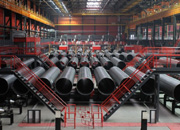 Threeway Steel is known as a professional supplier engaged in manufacturing and distributing a wide range of steel pipe, and our headquarter located the central part of China – Hunan and six associated factories throughout China.
Threeway Steel is known as a professional supplier engaged in manufacturing and distributing a wide range of steel pipe, and our headquarter located the central part of China – Hunan and six associated factories throughout China.
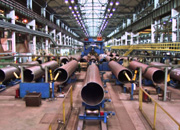 Threeway Steel is known as a professional supplier engaged in designing, manufacturing and distribution of a wide range of steel products with the headquarter located the central part of China – Hunan and six associated factories throughout China.
Threeway Steel is known as a professional supplier engaged in designing, manufacturing and distribution of a wide range of steel products with the headquarter located the central part of China – Hunan and six associated factories throughout China.
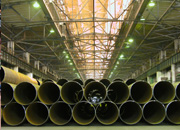 Threeway Steel is known as a professional supplier engaged in designing, manufacturing and distribution of a wide range of steel products with the headquarter located the central part of China – Hunan and six associated factories throughout China.
Threeway Steel is known as a professional supplier engaged in designing, manufacturing and distribution of a wide range of steel products with the headquarter located the central part of China – Hunan and six associated factories throughout China.
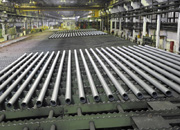 Threeway Steel is known as a professional supplier engaged in designing, manufacturing and distribution of a wide range of steel products with the headquarter located the central part of China – Hunan and six associated factories throughout China.
Threeway Steel is known as a professional supplier engaged in designing, manufacturing and distribution of a wide range of steel products with the headquarter located the central part of China – Hunan and six associated factories throughout China.
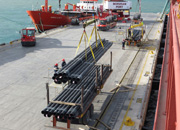 Threeway Steel is known as a professional supplier engaged in designing, manufacturing and distribution of a wide range of steel products with the headquarter located the central part of China – Hunan and six associated factories throughout China.
Threeway Steel is known as a professional supplier engaged in designing, manufacturing and distribution of a wide range of steel products with the headquarter located the central part of China – Hunan and six associated factories throughout China.

